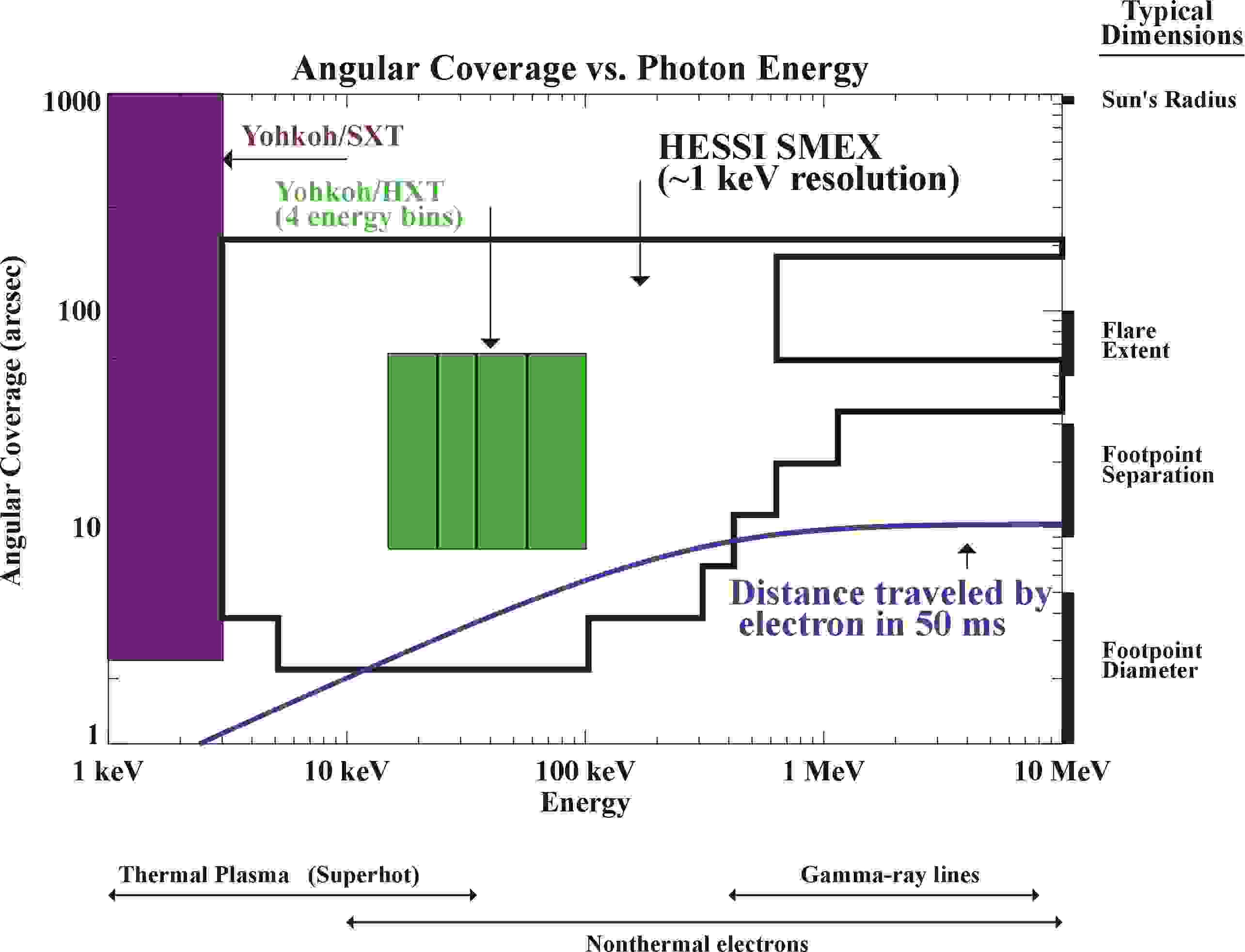 |
Hard
X-ray imaging spectroscopy |
 |
Hard
X-ray and gamma-ray imaging above 100 keV |
 |
Imaging
in narrow gamma-ray lines |
 |
Determination
of solar gamma-ray line shapes |
 |
Combination
of spatial, spectral, and time resolution that is commensurate
with physically relevant scales for energy loss and transport
of >10 keV electrons |
 |
Dynamic
range to both detect microflares and make quantitative
spectral measurements of the largest flares |
 |
High
resolution X-ray and gamma-ray spectra of cosmic sources
|
 |
Hard
X-ray images of the Crab Nebula with 2 arcsecond resolution
|
Mission Class
Small Explorer (SMEX)
Launch
Date:
February 5, 2002
Time: 3:58 PM EDT
Vehicle: Orbital
Sciences Corporation (OSC)
Pegasus XL
Site: L1011 aircraft takes off from Kennedy Space
Center
Orbit
Circular
Altitude: 600 km (373 miles)
Inclination to the equator: 38 degrees
Spacecraft Pointing
Spin stabilized
Spin axis within 0.2 degrees of Sun center
Spin rate:15 revolutions per minute
Ground Stations
Primary
University of California, Berkeley
Backup
Wallops Flight Facility, Virginia
Santiago, Chile
Weilheim, Germany
Operations Lifetime
2 years (3 years
desirable)
Spectroscopy
Detectors
Nine segmented,
hyperpure germanium crystals
Cooled to ~75 K (-198 degrees Celsius)
Energy Range
~3 keV - ~17
MeV
Spectral Resolution
~1 keV (FWHM)
in the front segment up to ~100 keV
~3 keV in the rear segment up to ~1 MeV increasing to ~5
keV at 20 MeV
Imaging
Technique
Fourier-transform
imaging
9 rotating modulation collimators (grid pairs)
Field of View
Full Sun (~1
degree)
Angular Resolution
2 arcseconds
to 100 keV
7 arcseconds to 400 keV
36 arcseconds above 1 MeV
Source sizes that can
be imaged
~2 arcseconds to ~180
arcseconds
Temporal Resolution
Tens of milliseconds
for a basic image
2 seconds (half a rotation of the spacecraft) for a detailed
image
Aspect System
Solar Aspect System
(SAS) determines the direction to Sun-center to better than
1.5 arcseconds
Roll Angle System (RAS) determines the roll angle to better
than 3 arcminutes
Spacecraft
Dimensions
Height:
2.16 m (85 in)
Width:
5.76 m (227 in) after solar panel deployment, 1.1 m (43.3
in) before solar panel deployment
Total Weight: 293 kg (645
lb)
Total Power Consumption: 414
watts
Onboard Memory: 4 Gbytes
Telemetry:
Up to 11 Gbits/day (3.5 Mbits/second)